You make entirely different decisions, once you have answered the question posed in the title of this article. Have you failed or are you simply frozen in indecision? Are you facing bankruptcy, or is there a chance for recovery? Have you nowhere to turn and nothing you can do? Are you in the race? Or have you been eliminated?
“It’s only a matter of time before there’s nothing left.”
With heart pounding certainty never before have dairy owners faced so many years of devastating downturns. Caught in the crosshairs of an economic and political climate that could continue indefinitely, even the most persistent are finding it difficult to find ways to keep their farm solvent. There are major debt loads. Personal guarantees are due. Family members and even young children are being negatively affected as they see that their family’s hopes and dreams disappearing. There are many who, finding themselves in this situation, would throw their hands up in despair.
“Postpone The Pity Party”
I say this with no intention of minimizing the seriousness of the situation your farm is in. -I am not mocking it either. It is almost a given that rejection, failure and unfairness are a part of today’s dairy business life. For years, one crisis after another has not only chipped away at producer income it has chipped away at producer confidence. We can’t change what we have no control over, but we can control how we react to it. No matter how tough or unjust the circumstances, there is always some positive forward action to be taken.
“Who Are You Going to Call?”
When self-esteem is at an all-time low, no one feels like making any call and talking about it their troubles. So do it anyway. You have nothing left to lose. Make those hard calls. Talk to creditors, bankers, family and counsellors. When you are down and feeling desperate, you need to look for that needle in a haystack piece of information that could make a difference. Suffering in silence is just as demeaning as blaming everyone and everything else. There is absolutely no room to continue with the romantic notion that dairy farming is going to magically right itself in time to save you, small dairies, your county or, depending on where you live, your country. The dairy industry is big business. If that is something you can accept as part of your dairy reality, then there are a few more things you can consider, when attempting to change the downward slide.
“Talk to the Leading Edge Not the Bleeding Edge”
Fifty years before you started farming, what did dairy farming look like? How has your dairy changed during your tenure? Are you expecting or hoping that change will stop now?
For a moment, ask yourself where the industry is currently succeeding. What size is the most successful? What size is unsuccessful? What business decisions are producing profits? What three things distinguish leading edge dairies from those who are bleeding money? Seek out ways to meet with, connect with or, at the very least, read about those who are rising to the top. Get the details on cash flow, mechanization, using new technology, nutrition and genetics and robotics. Are any of these relevant to your family dairy situation?
“Talk to the Family On the Front Line”
Having an open discussion with family members about the severity of the situation is probably the hardest conversation you will ever initiate. As much as we would like to spare loved ones or protect them from stress and worry, this isn’t a decision from which they can be excluded. You may even be surprised at how aware everyone is. Do your best to provide a clear explanation, providing numbers and dates and other relevant information that is true right now. Don’t cite the past. Don’t fear the future. By stepping outside your comfort zone, show those you love that the best way to conquer fear is to face it head-on. Allow them the time to ask questions, show fear and lay blame. When everyone is on the same page, you will have an idea of what the next priorities should be.
- Keep running the business. If you do decide to sell, don’t showcase that you have quit.
- Get your paperwork in order. In one place. Do it now!
- Get rid of everything that isn’t working. These things not only slow you down, but they also bring you to a complete stop. Think broken equipment. Or it could be cows with more sentimental value than production value. Sick animals that are taking your time away from your priority producers.
- Don’t spend money on new field equipment or on maintaining and repairing your own. Work with a custom operator to evaluate what can be sold and how your land and crops can be part of a business arrangement. Focus on efficiency. Crops or milk? What are you better at? Producing crops or managing cows?
- If you decide to focus on your milk-producing cows, get the most from the best and sell the rest.
Once you give this area your focus, you will find more ways to put your money where the money is!
“Money Talks!”
Money is the beginning of your recovery. Talk to everyone who is on your money list
- Those who want your money.
- Those who have money.
- Those who owe you money.
If possible, call together your lenders. Have the same honesty and transparency with them that you and your family have gone through. Don’t stop at the status quo. Come up with at least one alternative. Every person or business with a hand reaching into your pockets would also have the willingness to provide advice, information or even capital based on what they have learned from their connections to dairy businesses today. The goal is to seek a win-win for all parties. Of course, in any new restructuring of the business relationship, there are risks. The reward is to come up with strategic decisions that make the future viable.
“But Can You Bank on It?”
Many dairies are well beyond a simple cash crunch. Realistically more credit is not the answer for either side. Have discussions about what options there are before foreclosure.
Financial businesses have issues with profitability too. They can’t simply cut off clients. Work with them from the idea that nobody wins when a dairy must close. Be open and honest. Don’t simply fold. Discuss which is worse — write off or write down or is there a workable plan that can be put in place. It goes without saying that those who owe you money must pay up. Now.
“Givers. Takers. What Do Your Suppliers Do Best?”
Take a hard look at those people, companies and teams that you do business with. If they submit invoices to your dairy, can you equate that expense with the value added that they provide? Suppliers are part of your team, and this is a time to expect more from everyone on that team. Once again, off-farm businesses like these suppliers could offer a different perspective on your situation that might be helpful. You recognize that you can’t stand still. It is time for all your health, nutritionists, equipment and feed suppliers to step up too! Expand your discussions. Nutritionists may have a business idea. Veterinarians may suggest different animal housing management. Expect more or part ways. Ending one of these relationships may seem har, but how committed are they to your success? What role do they play, or want to play, or should they play in your future?
“All I Ever Wanted….”
Facing your dairy crisis will make you repeat this mantra often, “All ever wanted to do was to milk cows!” Today you are milking all right, but you are about to lose it all if you don’t change something? Are you frozen and unable to do anything because of things you will not do?
In other businesses who (like small agriculture) have been squeezed out by economies of scale, it is common for the management and staff to be hired by the new ownership team. However, in dairy, this type of takeover has been deemed distasteful and gets rejected for not being a viable solution. Before walking away, ask yourself where you will find the best place to use the skills you have spent your working life developing. Can you afford to be unemployed? Where can you cash in on the abilities you already have? You are your own best asset.
“Seller Beware! Buyer Be Informed”
If you come to the decision to sell, don’t let the decision break the spirit that has brought you this far. Your mental and physical well-being stands well above everything else you face.
You have come to where you are by doing your best. The optimism of dairy farmers is part of your character, but there comes a time when enough is enough. In facing accountability, there is much that has been beyond your control.
- Dairy market turmoil
- Natural disasters
- Sustained low commodity prices
- Droughts.
- Seasons (such as the current one0 where the planting window may close entirely
- Unrelenting mental stresses leading to depression and health issues
- Political talk is cheap. Political help isn’t enough.
- The Opioid crisis.
You alone cannot turn any one of these around. Nor should you try.
At this point, your best step forward may be to take a step back and decide to take care of yourself. You are worth it. You are needed for who you are as a person, not only as a dairy farmer. Seek advice. Get spiritual support. Do what is best for your good health.
THE BULLVINE BOTTOM LINE
Regardless of where you are, focus on today. Focus on what you can START. Start something new. Start a new change. START OVER. Remember how many times you have heard, “Life isn’t a sprint. It is a marathon.” We can look at dairy and say, “Dairy isn’t a mad dash. It is a long distance relay.” Love your team. Love yourself!
Get original “Bullvine” content sent straight to your email inbox for free.








 “I am the third generation dairy farmer at our current location which is a half hour South of downtown Ottawa, “says Justin. Riverdown is truly a family farm operation he explains. “I farm with my parents and grandparents and have no employees outside of family labour.” The farm is comprised of 650 acres of which 550 are owned. “We milk 110 cows in a new robotic dairy barn with 2 Lely Astronaut A4 robots.” The robotic change is recent for the Velthuis family. “We moved in just over one year ago. All animals except the show heifers and calves on milk are housed in the new barn.”
“I am the third generation dairy farmer at our current location which is a half hour South of downtown Ottawa, “says Justin. Riverdown is truly a family farm operation he explains. “I farm with my parents and grandparents and have no employees outside of family labour.” The farm is comprised of 650 acres of which 550 are owned. “We milk 110 cows in a new robotic dairy barn with 2 Lely Astronaut A4 robots.” The robotic change is recent for the Velthuis family. “We moved in just over one year ago. All animals except the show heifers and calves on milk are housed in the new barn.” 
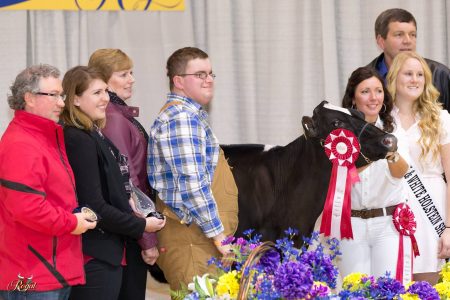

 It is the dream of every passionate dairy breeder to achieve recognition. This can be done in many ways, from success in the show ring to earning Master Breeder status. Dominique Savary of Grand-Clos Holstein in Switzerland has earned both those benchmarks. However, he has not stopped there and is continuing to gain recognition for his skill in taking great photographs of the cattle, people and dairy industry that he is so passionate about. The Bullvine recently had the pleasure of interviewing Dominique and discussing his experiences as dairy breeder, showman and photographer.
It is the dream of every passionate dairy breeder to achieve recognition. This can be done in many ways, from success in the show ring to earning Master Breeder status. Dominique Savary of Grand-Clos Holstein in Switzerland has earned both those benchmarks. However, he has not stopped there and is continuing to gain recognition for his skill in taking great photographs of the cattle, people and dairy industry that he is so passionate about. The Bullvine recently had the pleasure of interviewing Dominique and discussing his experiences as dairy breeder, showman and photographer.
 Dominique and Grand-Clos Holstein received the title of Master Breeder in 2015
Dominique and Grand-Clos Holstein received the title of Master Breeder in 2015 “I really want to do more studying of the technical side of photography.”
“I really want to do more studying of the technical side of photography.”  Dominique’s favorite places. “The Royal Winter Fair” “World Dairy Expo” “Quebec landscapes”
Dominique’s favorite places. “The Royal Winter Fair” “World Dairy Expo” “Quebec landscapes”
 Everyday Objects Are Given New Life
Everyday Objects Are Given New Life Andrea Jorgensen now living and loving life on Ri-Val-Re Farm in Webberville, Michigan unexpectedly declares that her journey to becoming a bovine artist wasn’t the usual one of lifelong familiarity with cows. “I wasn’t raised on a farm, so the whole dairy industry has really opened my eyes.” Andrea’s eye-opening experience has art also opened the eyes of dairy art lovers. Those familiar with her art, admire her eye for dairy anatomy and the way her paintings capture the nuances of the different personalities or her subjects. From a single painting or a hanging of several pieces, it is easy to see what set’s Andrea’s work apart. Her unique, ultra-colorful paintings, are comprised of layers of bright acrylics that enhance and expand our usual perception of the black, white and brown dairy cows that dairy folk love to admire. (Read more:
Andrea Jorgensen now living and loving life on Ri-Val-Re Farm in Webberville, Michigan unexpectedly declares that her journey to becoming a bovine artist wasn’t the usual one of lifelong familiarity with cows. “I wasn’t raised on a farm, so the whole dairy industry has really opened my eyes.” Andrea’s eye-opening experience has art also opened the eyes of dairy art lovers. Those familiar with her art, admire her eye for dairy anatomy and the way her paintings capture the nuances of the different personalities or her subjects. From a single painting or a hanging of several pieces, it is easy to see what set’s Andrea’s work apart. Her unique, ultra-colorful paintings, are comprised of layers of bright acrylics that enhance and expand our usual perception of the black, white and brown dairy cows that dairy folk love to admire. (Read more: 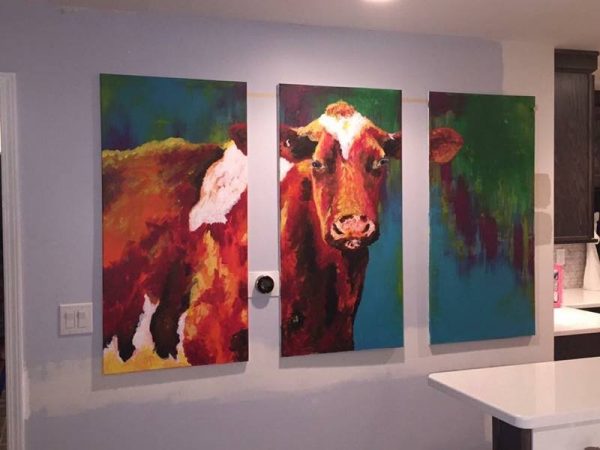
 You might say that Andrea was inspired by a favorite from her husband Jerry’s stable and, as a result, Andrea has created a stable of painted favorites to send out into the world. Much of Andrea’s painting has been done on commission and frequently the products of her talent, like the gift she painted for her husband, become gifts given and shared between other dairy admirers.
You might say that Andrea was inspired by a favorite from her husband Jerry’s stable and, as a result, Andrea has created a stable of painted favorites to send out into the world. Much of Andrea’s painting has been done on commission and frequently the products of her talent, like the gift she painted for her husband, become gifts given and shared between other dairy admirers.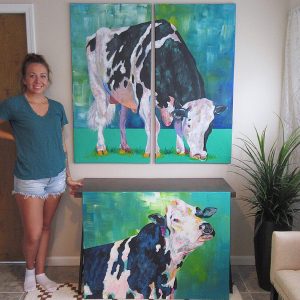 As we get to meet this artist, we are in the fortunate position of being able to use hindsight to discern what events were responsible for getting Andrea’s artistic career started. Andrea gives credit for her introduction to dairy to one her husband Jerry Jorgensen, known to many as a successful dairy breeder and recognized dairy judge. “I probably wouldn’t be painting at all if it wasn’t for him. Not just because of the support and encouragement but because of the family dairy farm. I wasn’t raised on a farm, so the whole dairy industry has really opened my eyes. I always thought cows were dumb, stinky creatures before I met Jerry.” It is an understatement to say that he changed her initial perceptions of cattle, “Yes, they can still come off (as smelly) but I have a different respect for their beauty now.”
As we get to meet this artist, we are in the fortunate position of being able to use hindsight to discern what events were responsible for getting Andrea’s artistic career started. Andrea gives credit for her introduction to dairy to one her husband Jerry Jorgensen, known to many as a successful dairy breeder and recognized dairy judge. “I probably wouldn’t be painting at all if it wasn’t for him. Not just because of the support and encouragement but because of the family dairy farm. I wasn’t raised on a farm, so the whole dairy industry has really opened my eyes. I always thought cows were dumb, stinky creatures before I met Jerry.” It is an understatement to say that he changed her initial perceptions of cattle, “Yes, they can still come off (as smelly) but I have a different respect for their beauty now.”  At this point, I must make sure that my reporting does not limit Andrea’s artistic talent to cow portraits only. As much as this is what drives The Bullvine, it isn’t fair to this gifted artist to limit the reporting of her talents to dairy only. Indeed, when asked to list her favorite works to date, Andrea responds the same way that dairy breeders, cattle judges and show string historians do, by first proclaiming what a difficult question that is. “It’s so hard to choose one! I have an attachment with all my paintings! There’s a top 5 favorites list which is constantly changing as I do more paintings.” Her diversity shows in the list she provided us with, which included what is hanging in her own home.” Right now, I would say my top 5 favorites are (in no particular order): Burt & Ernie (a painting of 2 pigs that is hanging in our living room), Antoine (a ram), Gizzard (a longhorn), Alfred (a rooster that is hanging in our kitchen), & Gatsby (a custom Jersey).
At this point, I must make sure that my reporting does not limit Andrea’s artistic talent to cow portraits only. As much as this is what drives The Bullvine, it isn’t fair to this gifted artist to limit the reporting of her talents to dairy only. Indeed, when asked to list her favorite works to date, Andrea responds the same way that dairy breeders, cattle judges and show string historians do, by first proclaiming what a difficult question that is. “It’s so hard to choose one! I have an attachment with all my paintings! There’s a top 5 favorites list which is constantly changing as I do more paintings.” Her diversity shows in the list she provided us with, which included what is hanging in her own home.” Right now, I would say my top 5 favorites are (in no particular order): Burt & Ernie (a painting of 2 pigs that is hanging in our living room), Antoine (a ram), Gizzard (a longhorn), Alfred (a rooster that is hanging in our kitchen), & Gatsby (a custom Jersey). Whenever you see someone doing a successful job of using their talents to build a career, it is human nature to want to understand how they have managed to do it. As a successfully productive artist, Andrea is in the position of not only growing from her own life choices but also being able to help others who wish to start their artistic journey. Her suggestions, like her art, are bold, forthright and forward looking. Here are the three that she urges others to use.
Whenever you see someone doing a successful job of using their talents to build a career, it is human nature to want to understand how they have managed to do it. As a successfully productive artist, Andrea is in the position of not only growing from her own life choices but also being able to help others who wish to start their artistic journey. Her suggestions, like her art, are bold, forthright and forward looking. Here are the three that she urges others to use. The Artist. The Mother.
The Artist. The Mother.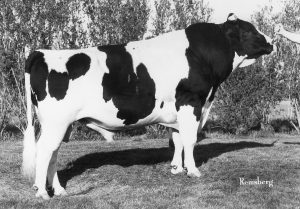

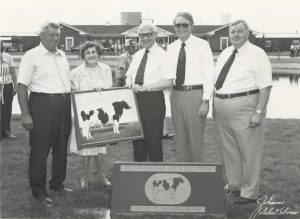 Elevation Made an Impact on Organisations
Elevation Made an Impact on Organisations
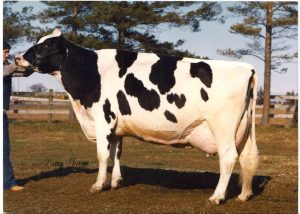
 Election platforms come and go and sometimes the ones that win never get put into action, but Andrew Scheer voiced support for supply management and for abolishing Prime Minister Trudeau’s carbon tax. Rural voters took notice of what he claimed and also were not as supportive of Maxime Bernier’s statements that he wanted to abolish supply management. Thus the expected winner became the election-night loser.
Election platforms come and go and sometimes the ones that win never get put into action, but Andrew Scheer voiced support for supply management and for abolishing Prime Minister Trudeau’s carbon tax. Rural voters took notice of what he claimed and also were not as supportive of Maxime Bernier’s statements that he wanted to abolish supply management. Thus the expected winner became the election-night loser.
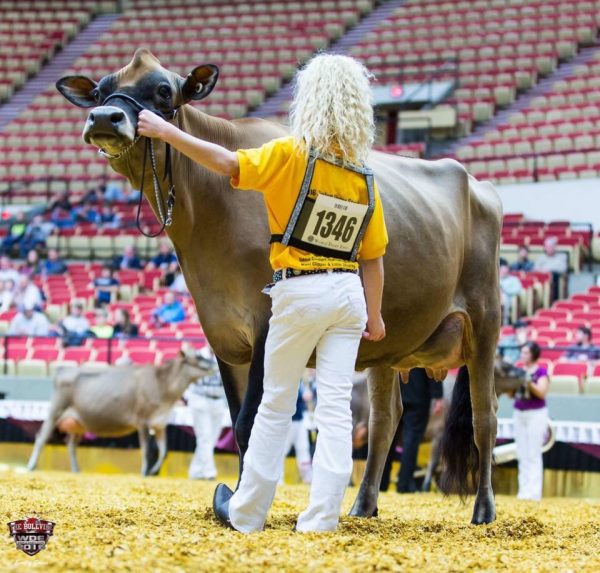


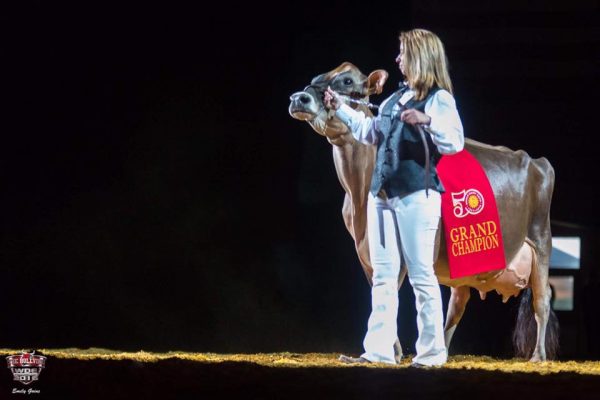



 vetMEDRIA SENSOR – Cow Monitoring System is Dedicated to Reliable Real-Time Data
vetMEDRIA SENSOR – Cow Monitoring System is Dedicated to Reliable Real-Time Data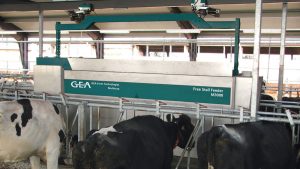 In July of 2016, GEA introduced the Wireless Integrated Control (WIC) system which is an intelligent software for its proven MixFeeder. The new system ensures that every performance group receives the optimal mix ration of raw feed, concentrated feed and minerals in the right volumes at the most appropriate intervals. The WIC delivers the feed precisely and reliably around the clock. This benefits milk producers and herd managers as it ensures that their cows are always performing at their full potential, thereby improving milk volumes and quality and reducing workload and costs.
In July of 2016, GEA introduced the Wireless Integrated Control (WIC) system which is an intelligent software for its proven MixFeeder. The new system ensures that every performance group receives the optimal mix ration of raw feed, concentrated feed and minerals in the right volumes at the most appropriate intervals. The WIC delivers the feed precisely and reliably around the clock. This benefits milk producers and herd managers as it ensures that their cows are always performing at their full potential, thereby improving milk volumes and quality and reducing workload and costs.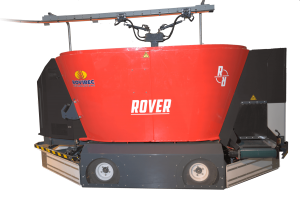 Introducing the Robot Named, “ROVER!”
Introducing the Robot Named, “ROVER!”



